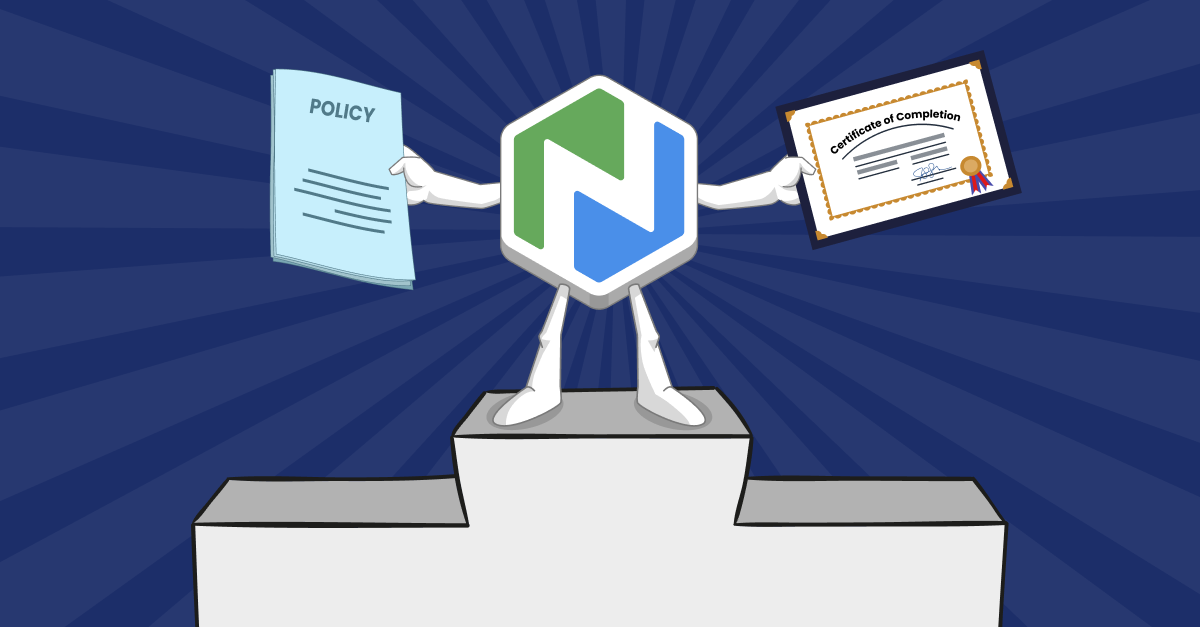How To Encourage Work-Life Balance Across Your Organization
Learn key strategies for fostering work-life balance across your organization and why it’s crucial for your team’s success.

About a year after I joined Niche Academy, I took a vacation.
Or, I tried.
I used airport downtime to work on projects. I hosted a webinar. And I kept popping into Slack to ask my supervisor a few “quick” questions. At first, his answers ended with gentle suggestions to stop working. Then he more clearly said we’d chat when I got back. When I told him about the next project I was planning, he firmly said (in the kindest way), “Listen. You’re on vacation. You can ask me any questions you want. But I’m not answering another one until you’re officially back on the clock. Go relax.”
Go…relax?
I’ve always prided myself on being driven and effective at work. And I’d been in environments where it was a sign of dedication to have a midnight timestamp on an email. I wasn’t used to, you know…not working.
I tried to relax. And eventually, I did. When I returned, the work was waiting for me—and I was ready for it. My supervisor asked how the vacation was and graciously didn’t mention how I’d blown up his chat when I was supposed to be off.
I reflect on that vacation quite a bit because it was so different from how I’d “taken time off” in the past. I learned that, in Niche Academy’s culture, time off actually means time off. My coworkers and supervisors don’t mind when I’m on vacation; in fact, they support it. And I learned that if I completely unplug during vacations, I have more drive to tackle the work when I return.
Of course, vacations are just one part of a work-life balance. True work-life satisfaction encompasses much more and, as Tracy Brower points out, “isn't just about your moments outside of work, but also within work.”
What is Work-Life Balance?
Kendra Cherry sums up work-life balance as “an equilibrium between your professional and personal life. When you keep things balanced, no single element of your life dominates and overwhelms the others.” Balancing your work and personal lives means one doesn’t overwhelm or distract from the other. In fact, a healthy work-life balance ensures you have enough time and energy for personal and work pursuits.
Work-life balance will look different for everyone because everyone has their own way of working and relaxing. Common elements often include taking vacations, unplugging from work at the end of the day, setting boundaries between work and home, and engaging in hobbies or activities that enrich and entertain you.
Balance also differs for the same person depending on where they are in work and life. Ioana Lupa and Mayra Ruiz-Castro call work-life balance a cycle rather than an achievement. The start of your career will be different from the middle, which will be different from the years before retirement. Balance shifts as responsibilities ebb and flow, and you may find the cycle easier at some times than others. The important thing to remember is that balance for one person isn't the same for another. And balance at one stage of life will be different from another stage.
Because work-life balance is highly personal and constantly shifting, there’s a tendency to treat it as an individual’s responsibility. But, as with many workplace topics, we prefer to look at how organizational culture impacts individuals. So, while there’s no standard formula for work-life balance, there are things managers and organizations can do to encourage it.
Why is Work-Life Balance Important?
Before we look at how organizations can support work-life balance, let’s look at why they should.
It starts with Brower’s statement that work-life balance isn’t just about taking more vacations or having more time off. It’s also about how much energy people can bring to their jobs. The key word is balance—and many companies give lip service to it but don’t always follow through.
Alexandra Kalev and Frank Dobbin point out that, despite what organizations say, many “signal in countless ways that their ideal worker is somebody unencumbered by family obligations who can adhere to…demanding daily schedules and career trajectories.” They note that “even when flexibility is offered, employees frequently don’t ask for it, fearing they’ll be penalized.” The unspoken rule may be that work-life balance is touted as a value, but discouraged as a practice.
This is as bad for the “work” part of work-life balance as it is for the “life” part. Cherry highlights research showing “that workers with better work-life balance are more satisfied with their jobs, perform better at work, and are more committed to their organizations.” And the numbers underscore the importance of this topic. By 2025, Gen Z employees will make up nearly a third of the workforce. What is their top consideration when choosing an organization, according to a Deloitte survey?
Work-life balance.
Supporting Your Team’s Work-Life Balance
Managers play a huge role in setting a team's culture and norms. In their study of working parents in Italy, Marcello Russo and Gabriele Morandin found that “employees who work with a supportive supervisor—someone who offers emotional and practical support, who acts as a positive role model, and who is a creative problem-solver—experience reduced work-life conflict, improved health, and increased fulfillment on the job and at home.” Good managers know that supporting work-life balance ensures their team performs well. Here are a few strategies you can use.
1. Talk about work-life balance
It may seem like a small thing, but talking about work-life balance shows employees that you know their lives are about more than work. An easy way to do this is by demonstrating that you personally value work-life balance. If you’re comfortable doing so, Patricia Lotich recommends talking about your interests and highlighting the interests of your team. You may be a keen gardener. A team member may be learning a language. These conversations normalize work-life balance and can play a part in building emotional loyalty among team members. And don’t stop at casual conversations. Russo and Morandin, in line with Kelev and Dobbin, argue that managers have the “power to encourage (or discourage) employees” from using work-life benefits like time off. So remind your team of the benefits your workplace offers—and be sure they use them.
2. Remove workplace annoyances
Managers can’t magically make work great for everyone all the time. But they can notice and address some of the stressors that make work feel like a grind. Bill Taylor believes managers can help people find pleasure, joy, and meaning at work by removing daily annoyances like busy work or inefficient procedures. If you see bottlenecks you can address, do your best to deal with them for your team. This could involve conflict resolution, establishing feedback loops, or setting goals. You can also help your team see how their work fits into the organization’s mission, so they can connect it to a bigger purpose when it does feel like a grind. The bonus? Removing annoyances and connecting to the big picture are also key aspects of workplace wellbeing.
3. Make schedules predictable
I once worked for an organization where my schedule was never the same from week to week. We all had to share nights and weekends, but I never worked the same shift from one week to the next. The result was that I could rarely plan anything—for my personal or work life. Kalev and Dobbin recommend making schedules as predictable as possible. But be sure to get your team’s input—you might be surprised to find that some people prefer working nights or Saturdays. If you can, Kalev and Dobbin also suggest focusing less on time and more on output, trusting people to manage their time and get work done. And Cherry recommends making your schedule predictable so employees can see how you take breaks and when to contact you.
4. Model work-life balance
Help employees see what work-life balance looks like by modeling it yourself. Lotich says, “When employees see their manager come in at the crack of dawn and stay long after all other employees have gone home, they feel obligated to do the same,” but that “leaders who have personal boundaries teach employees that boundaries are important and that they value life outside of work.” Remember my supervisor? He is absolutely dedicated to work. He also takes regular time off without checking his email or sending messages. He lets us know he will be on vacation, gives us enough work to do, and tells us when he’ll be back, providing a great example of what unplugging and prioritizing rest look like.
Work-Life Balance in Organizational Culture
Managers are key in supporting work-life balance for employees, but the entire organization plays a role. An organizational culture that gives lip service to work-life balance but operates under unspoken rules or group norms that discourage it risks employee disengagement, burnout, or recruitment and retention problems.
It can be difficult to change workplace culture. Natalia Peart points to five key aspects of culture that contribute to better work-life balance:
- Care
- Flexibility
- Trust
- Health
- Recognition
Let’s look at a few specific ways organizations can embody balance.
1. Normalize work-life balance
Kalev and Dobbin put it simply, “When work/life support for all is treated as normal, it has huge positive effects on workers, lowering stress, increasing productivity, and boosting retention.” The pandemic showed many employers that the standard nine-to-five in-office grind doesn’t have to be that way. People want work-life balance, and they want to work for organizations that demonstrate it. So, leaders should focus on creating a culture where interests outside of work are nurtured and valued. As I mentioned earlier, Niche Academy’s company culture is one of balance. It’s normal to take a vacation. It’s okay to take sick leave. Flexible schedules and autonomy are the norm. People’s interests and ambitions outside of work are shared, celebrated, and supported. The payoff? Happy employees producing great work.
2. Embed work-life balance
Codifying work-life balance is essential. What do your policies and procedures say? What benefits does your organization offer? Lotich says that “telecommuting, onsite daycare, gym memberships, life coaching, or budgeting education” are all examples of how organizations can support work-life balance. If your company is offering these benefits, great. But are employees using them? Kalev and Dobbin found that eight in ten companies offered flextime before the pandemic, but employees didn’t use it. Make sure people know about and use benefits and perks, and apply them equitably and formally so culture is created across the organization, not just on individual teams. Talk about benefits often, make access easy, and remember work-life balance is good for the organization in the long run.
3. Model work-life balance
I mentioned that managers need to model work-life balance, but really, all company leaders need to. Brower writes, “The choices you make as a leader will send significant messages to the team about the behaviors most acceptable within your culture and your organization. When you attend to your own work-life fulfillment and energy levels, you'll pave the way for team members to do the same.” Managers and their teams take cues from leadership, so C-suite executives should prioritize their work-life balance, talk about it openly, and encourage others to do the same—with no strings attached. Start with something simple, like the suggestion from a University of Florida research study to leave work at work when it’s time to go home.
Build a Better Culture Today
The past few years have radically changed the way many people work. And, with Gen Z moving into the workforce, expectations of work-life balance aren’t going away. If anything, organizations should prioritize them today.
It can be hard to shift to a culture of embedding and modeling work-life balance. As Kalev and Dobbin note, “Employers sometimes worry about the bother or cost of implementing work/life programs, but what they should really worry about is the bother and cost of not implementing them. Specifically, they should be concerned about losing workers who are good at their jobs, about the cost of finding and training their replacements, and about losing the battle for diverse talent.”
When I started working for Niche Academy, I realized what work-life balance looks like. I’m proud to work on a team that creates tutorials on topics that build better workplace cultures. With the right training and intention, any organization can learn how to talk about, embed, and model work-life balance to create happier, healthier, and human-centered workplaces.
If you would like to explore an easy way to jumpstart your training initiatives, check out our Employee Wellbeing Training Program.
This post is the fourth in a series of articles we are publishing on topics related to building a better workplace culture. Subscribe to our blog using the form below to be notified when the next article is published.
References
2024 Gen Z and Millennial survey: Living and working with purpose in a transforming world. Deloitte.
Brower, T. (August 15, 2023). Why work-life balance is crucial for leaders. Newsweek.
Cherry, K. (October 31, 2023). Why work-lifeb balance is so important— And how to nail it. Verywell Mind.
Hamilton, E. (April 17, 2023). Improving your work-life balance can make you a more effective leader at work. University of Florida News.
Lotich, P. (March 22, 2023). 6 Things managers can do to encourage work-life balance. Thriving Small Business.
Lupa, I. and Ruiz-Castro, M. (January 29, 2021). Work-life balance is a cycle, not an achievement. Harvard Business Review.
Peart, N. (November 6, 2020). The most important ways companies can improve work-life balance. Forbes.
Russo, M. and Morandin, G. (August 9, 2019). Better work-life balance starts with managers. Harvard Business Review.
Taylor, B. (January 10, 2022). How leaders can balance the needs to perform and to transform. Harvard Business Review.

.png)
.png)
.png)

.png)
.png)
.png)

.png)
.png)

.png)